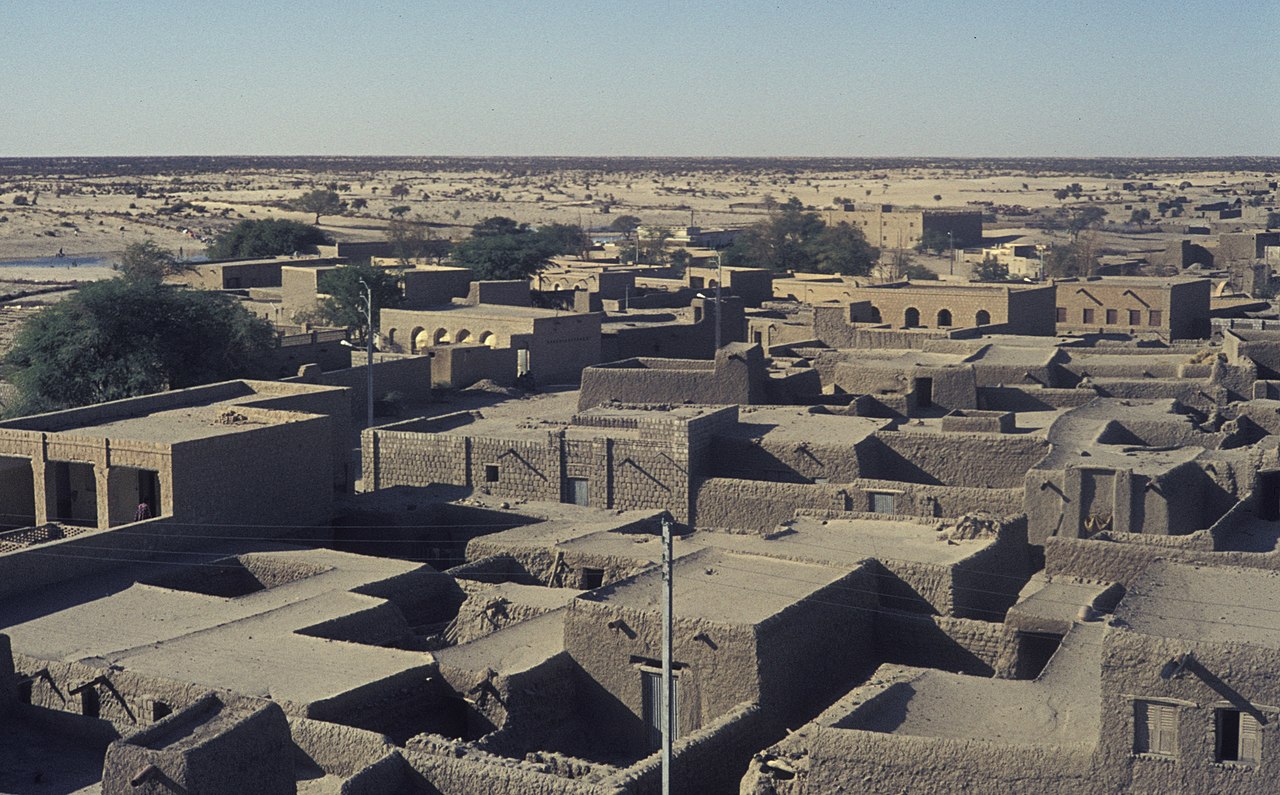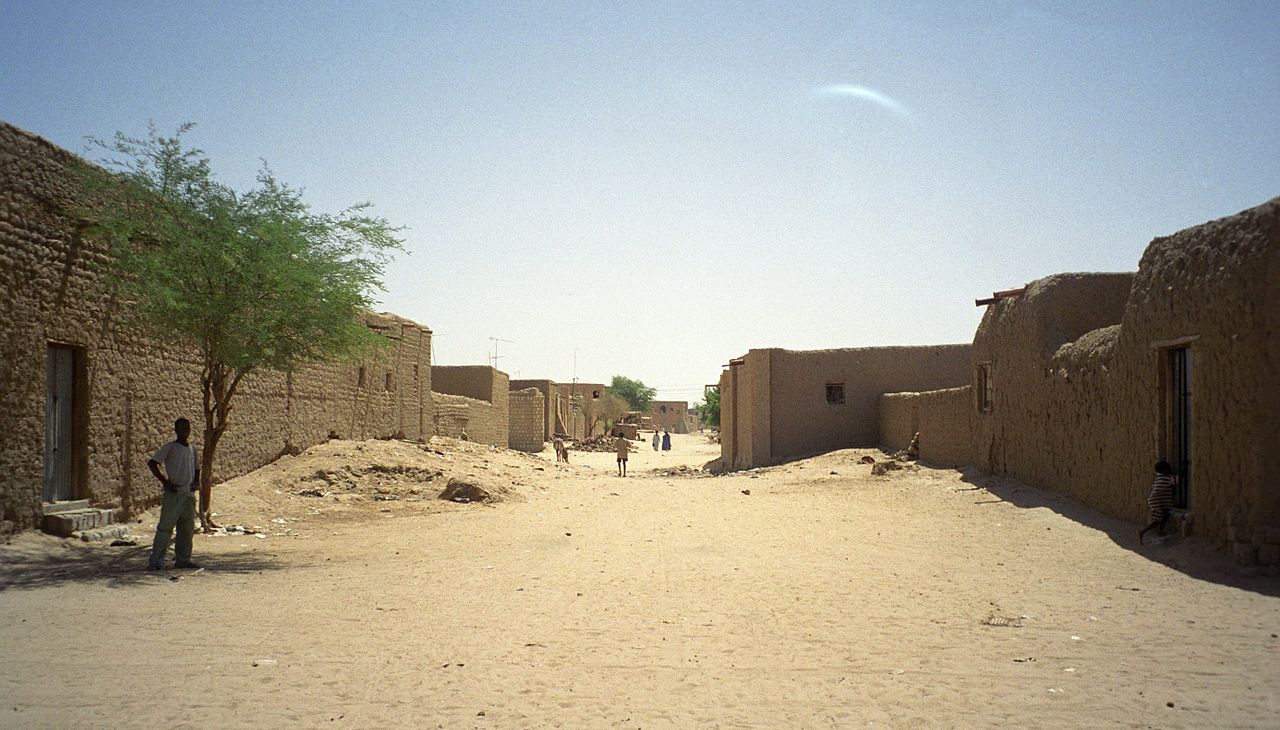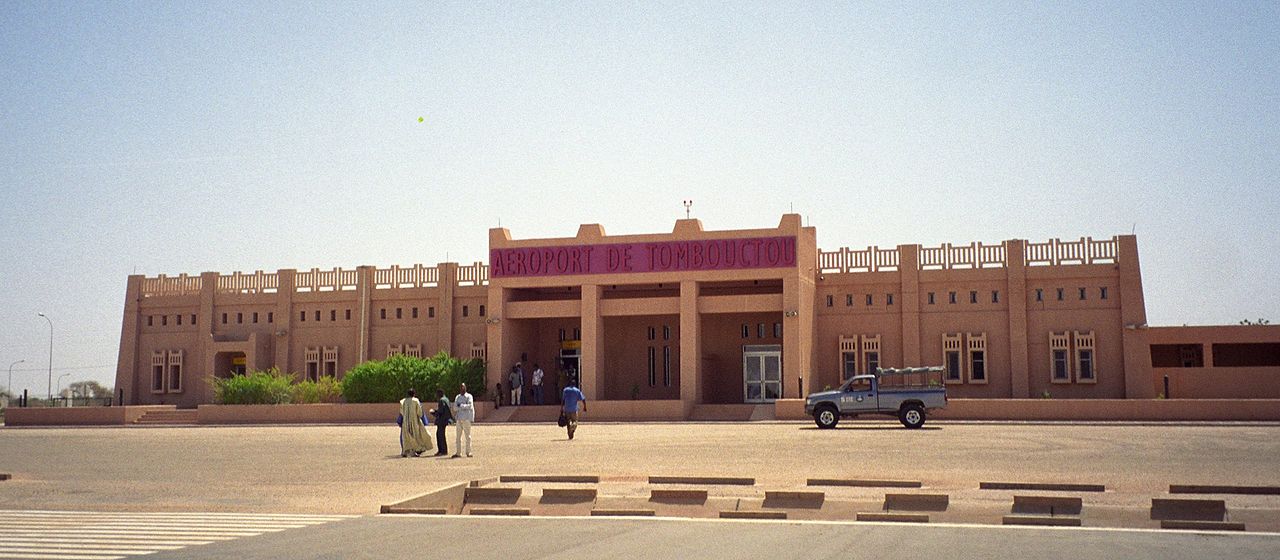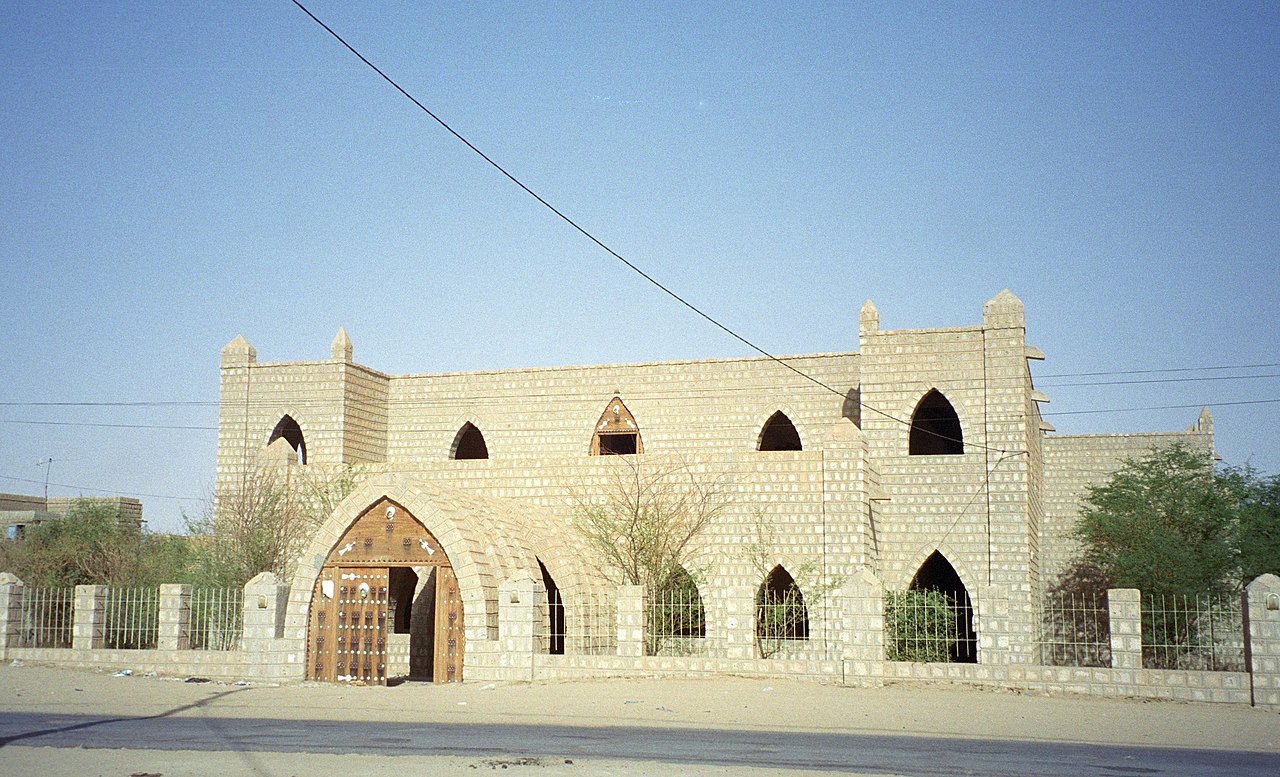
La City of 333 Saints is one of the denominations that receives Timbuktu. It is also known as "the Pearl of the Desert" and, as you know, it is located in the central part of Mali, the eighth largest country in Africa. Therefore, it is located in the western zone of the continent and borders, among others, with Mauritania, Senegal, Algeria, Ivory Coast o Niger.
Precisely, the mighty river of this name passes about seven kilometers from Timbuktu, giving it the water it needs. It is a town that has a privileged situation, which made it a place of passage for the trans-saharan trade route and gave him great prosperity. Next, we are going to explain everything you need to know about the City of 333 Saints.
A bit of Timbuktu history

A street in Timbuktu
The town was already known in times of Herodotus, who quotes it in one of his writings. As we told you, she owed her fame to the trade route that ran all over the world. West Africa carrying merchandise from one place to another and which lived its heyday between the XNUMXth and XNUMXth centuries.
For its part, the City of 333 Saints began its progress in the XIV, when it was annexed to the Imali empire for the king Muse I. Its vitality and strength intensified even more one hundred years later, when it was conquered by the songhay empire. Thereafter it became famous for its libraries and archives. But it also became essential to Islam because of the importance of its sankore university, which is considered one of the first in the world.
Already in 1988 UNESCO declared Heritage many of its mosques and became a pole of tourist attraction. Unfortunately, this is no longer the case because of jihadist terrorism. But it is not the only grave danger Timbuktu faces. Because it is located at the foot of the Sahara desert, the sands are invading the city.
In fact, experts believe that it could even disappear under them around the year 2100. In any case, Timbuktu is today a thriving city of markets and other public spaces where the legendary nomadic populations meet. berbers.
Why is it the City of the 333 Saints?

Airport of the City of the 333 Saints
To explain the origin of this name, we must go back to the history of Timbuktu. The religious influence caused that, around the Middle Ages, non-Muslim foreigners were prohibited from entering the city. As you will understand, this contributed to increasing the halo of mystery that surrounded it until the arrival of the French in the XNUMXth century.
But, regarding this, we do not resist telling you a curious anecdote. Long before those, someone closer to us visited Timbuktu, We tell you about the legendary Lion the African, who passed through it in the XNUMXth century on a diplomatic mission. In case this character does not sound familiar to you, we are going to talk about him.
He was born in Granada in 1488 and was one of the leading ambassadors of his time. After being forced to leave Spain, his family settled in the Moroccan city of Fez. He received a careful education and, as an adult, he served for the sultan of this area, traveling through a good part of Africa. But he also traveled to Mecca and Egypt.
On one of his trips, he was captured by his compatriot Pedro Cabrera and Bobadilla, son of the Marquis of Chinchón. This, seeing that it was someone important, made it available to the Pope Leo X. In Roma converted to Christianity, but above all, he wrote a monumental Description of Africa and the remarkable things that are there. However, we are deviating from our topic: the origin of the name of City of the 333 Saints.
In the time of maximum splendor of Timbuktu, there were a good number of heroes in the town who contributed to its religious enrichment. For that reason, at his death they became protective saints of the population and their bodies were deposited in different monuments of the locality. Hence the name.
But, since we are talking about this, we also want to explain why is it called Timbuktu. It is not clear and there are several theories about it. The most commonly accepted says that it is the union of tin, which means place, and buktu. The latter was the name of an elderly Malian woman who lived in the area. When passing through it, the Tuaregs gave him belongings that they were no longer going to need.
For this reason, if someone asked them where they had left them, they answered that in tin buktu, that is to say in the place of Buktu. Another thesis says the same thing, but turns the old woman into a slave of the same name. However, more important than this is that we tell you about the wonders of the City of 333 Saints.
What to see in Timbuktu

Courtyard at Sankore University
Currently, this city has a population of approximately fifty-five thousand inhabitants. But, if you visit it, the first thing that will surprise you is that practically all It is built with adobe and mud. This includes his spectacular Wall five kilometres. It was reasonable given that it was the most common materials in the area.
But there is something more serious regarding the monumental heritage of Timbuktu. In the context of the Mali War, the city fell into the hands of a terrorist group that destroyed many of its monuments as impious. The largest cultural institutions in the world asked that the wonders of the town be respected, but everything was useless.
However, several of its monuments have been preserved. Let's talk about some of the most prominent.
The mosques of the City of 333 Saints

Djingareyber Mosque, one of the most important in the City of 333 Saints
In its heyday, Timbuktu came to have one hundred and eighty mosques to which more spectacular. Many no longer exist. But, among those that remain, the most prominent is Djingareyber's. It was built in the fourteenth century (year 1327) by another illustrious man from Granada, although less than the African. It's about the architect Ishaq Es Saheli.
It is the only one in the city open to non-Muslims and it has spectacular dimensions. To give you an idea, it has three interior stands, more than twenty aligned pillars and two minarets, but, above all, it has a space for prayer with capacity for two thousand people. It is also one of the three madrasah or study centers of the University of Sankore and holds the recognition of World Heritage.
Precisely, the sankore mosque It is another one that you must see in the City of the 333 Saints. In his case, it was built around the year 1300, although it was rebuilt in the XNUMXth century. Then it was done in such a way that its patio had the same measurements as the Kaaba or House of God of Mecca. Likewise, its unique tower stands out from which wooden stakes known as torones protrude. The purpose of these could not be simpler. They served as steps to access the top and thus be able to restore it when the adobe was wearing away.
For its part, the third great mosque of Timbuktu is Sidi Yahya's, which owes its name to the first imam who directed it and who is buried in it. He is considered, precisely, one of the saints to which we referred before. In his case, the mosque was built at the beginning of the fifteenth century and took forty years to complete.
Timbuktu Libraries

The Ahmed Baba Documentation Center
The other great monumental attraction of the City of 333 Saints is the one made up of its different libraries. Among them, only a few remain, such as the Andalusian or Ahmed Baba Documentation Center. The latter was a great Saharan intellectual who lived between the XNUMXth and XNUMXth centuries and who has bequeathed us more than forty books.
But more important is, precisely, that we talk to you about the Timbuktu manuscripts that are housed in these libraries. Many of them are preserved because they were taken out of the city upon the arrival of the fearsome jihadist group Ansar Dine to take them to Bamako. Fortunately, they were able to save themselves from the destruction they caused.
These are thousands of documents dated between the XNUMXth and XNUMXth centuries that keep the wisdom that was in the City of the 333 Saints in medieval times. For this reason, they deal with the most diverse topics. There are those that deal with the movement of the planets, about how the education of children should be and even about certain diseases and their therapies. But some also deal with political issues, mathematical calculations and even narrate trips to China.
We don't need to explain the capital importance of these manuscripts for the history of knowledge. By the way, in recent years a process has begun to digitize them so that they are never in danger again. It takes care of it Savama Association, who was also in charge of safeguarding them when they left Timbuktu.
In conclusion, we have shown you what you can visit in the City of 333 Saints. As we have told you, few monuments remain in this thousand-year-old adobe and mud town due to the devastation of the extremists who occupied it in 2012. But Timbuktu still preserves charm and mystery it has always had for the westerner. Dare to meet her.